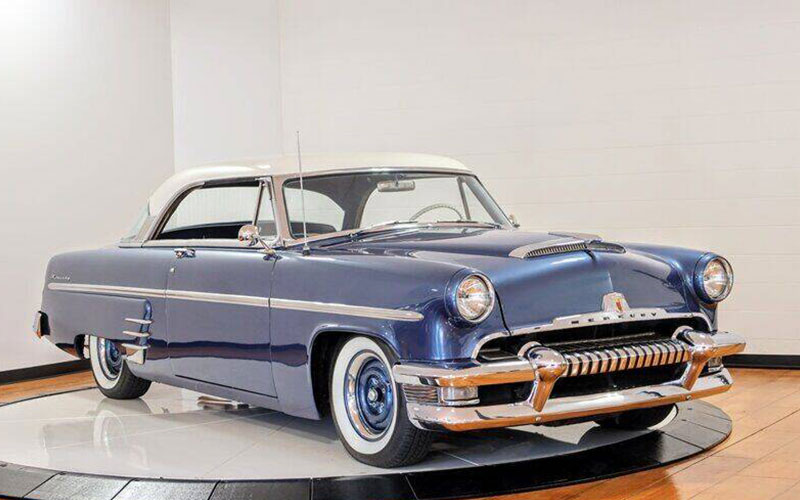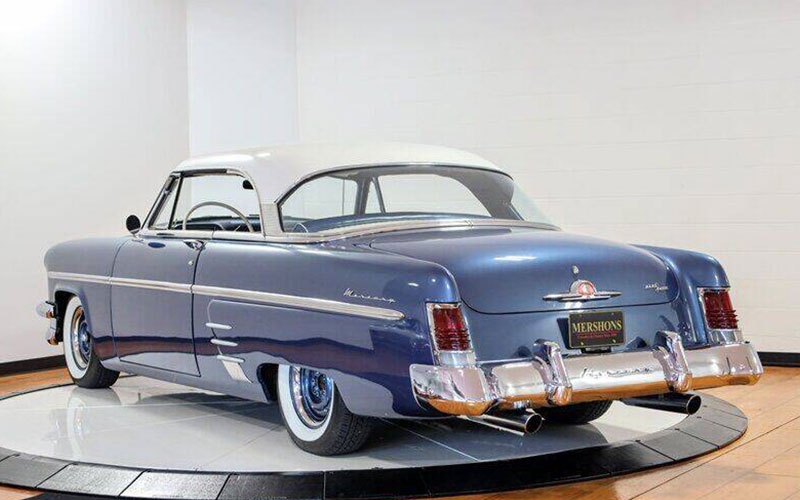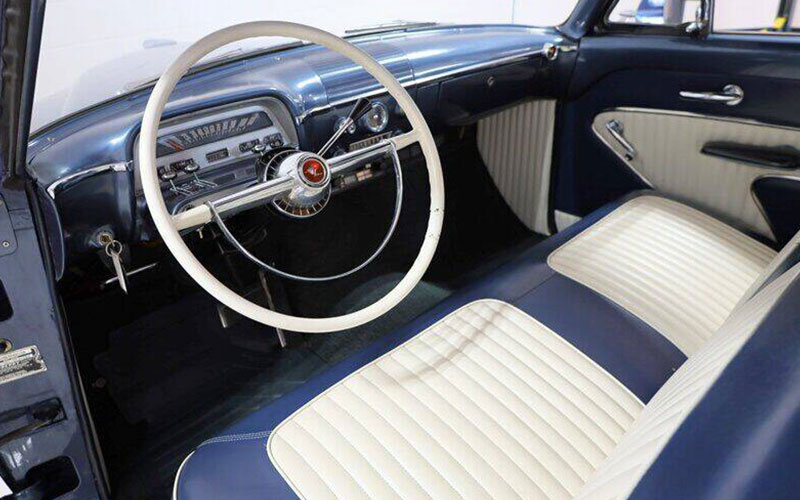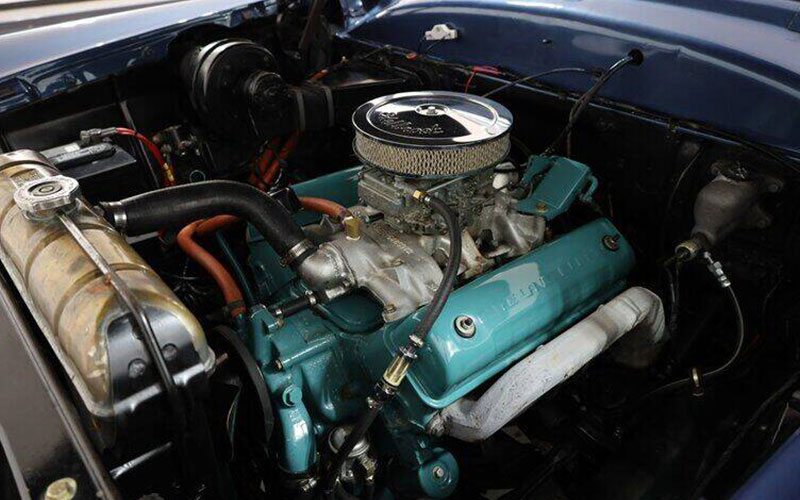
It was the Modernists of the early twentieth century who advocated for “art for art’s sake.” That sense of play, ornamentation, and ostentation would take a few decades to filter down to automotive design. By the 1950s, the art movement that had once emerged in response to industrialization was now informing industrial design. That decade’s cars, with their chrome, their fins, their sheer presence on the road, were a rolling showcase for ever more ambitious designs. Post-war competition and a market hungry for innovation spurred a visually unique and distinct era in automotive history.
Early in the 1950s, the Mercury brand was looking to expand on their bread-and-butter Mercury Eight model. The Monterey was initially brought on as a top-of-the-line two-door coupe version of the Eight offered in blue, red, or black with a yellow top. Despite negligible sales, the Monterey got its own separate nameplate in 1952.

Across its brief first generation, spanning from 1952 to 1954, the Monterey was the top model for the Mercury brand. Body styles expanded to include a four-door sedan, two-door convertible or coupe, and, in 1953, a woody style four-door station wagon. One of the Monterey’s key selling points was 18% more window area than the Mercury Eight version it replaced. For even more outward visibility buyers could opt for the special (and now rare) “Sun Valley” version that came with a plexiglass half-roof in the same vein as the Ford Crestline Skyliner.
Monterey started out with Mercury’s 255 cu in Flathead V8, which was replaced in 1954 by a 256 Y-block V8 making 161 horsepower. A three-speed manual was offered alongside a three-speed “Merc-O-Matic” automatic transmission.

Unlike many other ‘50s classics like the Bel-Air or Eldorado, the Mercury Monterey, in coupe form, wasn’t overly long. Instead, the Monterey was compact and muscular, like a high school wrestling coach. The car looks set down on its haunches. The high beltline is complimented by a chrome stripe that runs nearly the length of the car and echoed by three additional chrome pieces that adorn the rear wheel skirts. The car features several different Mercury emblems and crests inside and out, our favorite located on the passenger side dashboard. For those cars equipped with the automatic, the trunk lid sports a nifty “Merc-O-Matic” emblem.
The first-generation Mercury Monterey changed little in its short run. The prominent front bumper was updated for the 1953 model year to feature larger fins for the air intake and a pair of protruding “bullets.” The 1954 model further modified the front bumper by eliminating the intake fins while accentuating the double-bumper design. The taillights were updated and lowered that same year. The Mercury Monterey had the historical distinction of being Ford’s 40-millionth vehicle built, a Siren Red Monterey convertible, to be exact.

Our Cool Car Find example comes not in red, but a stunning Atlantic Blue. Restoration and upkeep on this two-door coupe is remarkable top to bottom, inside and out, including the impeccable engine compartment. White wall tires and plentiful chrome perfectly complement the blue and white leather upholstery. Note the Monterey’s unique HVAC controls, located just above the steering column, which were fashioned after aeronautic controls. Another choice detail is the massive hood ornament and chromed faux hood scoop.
With just 53,722 on the odometer and a price tag of $29,900, this Mercury Monterey is perfect for new collectors or simply those who, like us, can’t get enough of these artful ‘50s classics.




